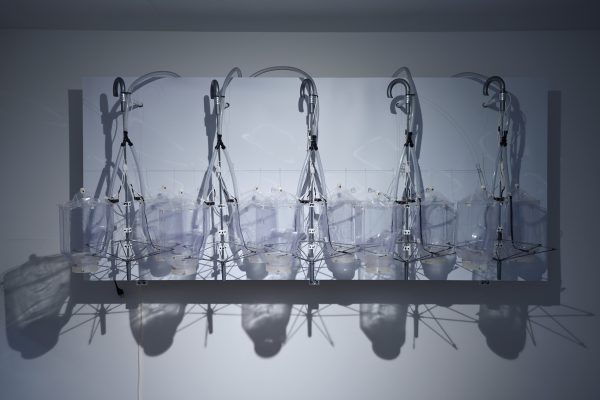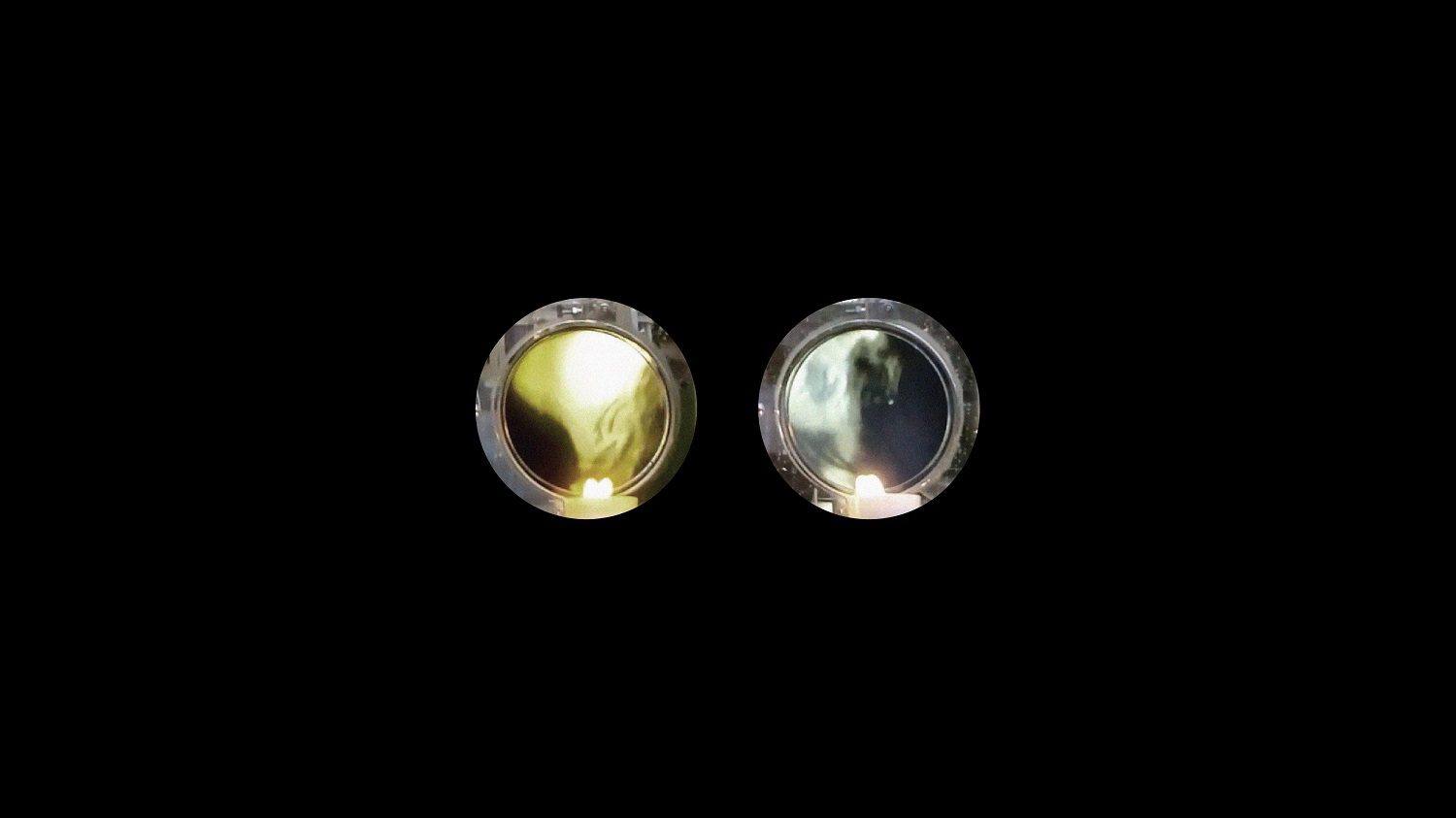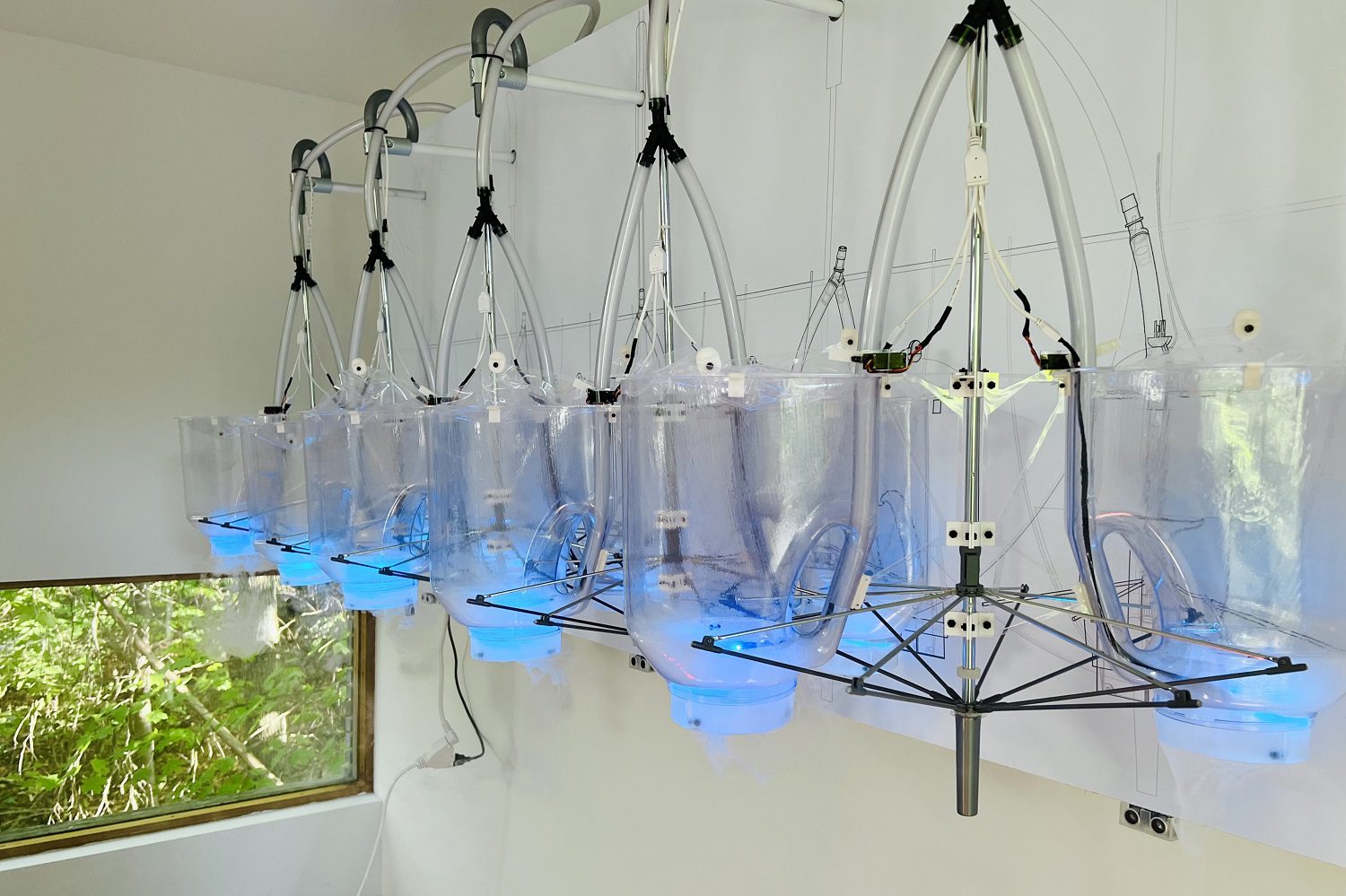Professor’s Visualizations of Air Featured in Exhibition

For nearly a decade, Assistant Professor of Architecture Catty Dan Zhang has been studying air as an important and active system to be foregrounded in the design process. An exhibition in Rhinebeck, New York, features tools and products of her investigations. Pamphlet Architecture: Visions and Experiments in Architecture at ‘T’ Space gallery presents works by the five finalists from the Pamphlet Architecture 37 open call, an international competition held last winter. Zhang won first prize in the competition, giving her the opportunity to produce the next book in the Pamphlet Architecture series.
Zhang’s “Active Atmospheres” projects, such as VENTS (2018), FANS (2017), Medium Matters (2016), and MASKS (2015), translate the ephemeral into the sensory, making airflow both visible and tangible in artistic multimedia installations. Four pieces at ‘T’ Space represent early and current research.

The Medium Matters Instrument 02 (2016), on display in the gallery, is a portable optical device that allows a person to see movements of hot air with the naked eye.

Paired with the instrument is video documentation of hot air visualization using the apparatus during a walking test.

VENTS 3.0 is a compact and integrated version of the interactive installation with air/light/sound effects that filled the Storrs Gallery ceiling in 2018. That larger installation, part of the exhibition SEE-ING: The Environmental Consciousness Project, was a vast array of clear umbrellas, enhanced with blue lighting and a complex system of tubes, that produced a rain of fog in puffs that reflected real-time local wind speeds and the recorded data sets of Hurricane Florence during a seven-day period.

Digital Air: Donuts (2020) is a frame excerpt from a looped video that features computational studies on digitally simulating ring forms of air flow as donuts.
Zhang will develop her competition proposal, “Active Atmospheres: On Instruments and Protocols for Medium Hybrids and Architectural Voids,” into the next issue, Pamphlet Architecture 37, in 2023.